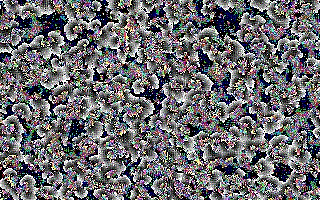|
fluid64 by Rudi
[nfo]
|
||||||||
|---|---|---|---|---|---|---|---|---|

|
|
|||||||
|
popularity : 58% |
|||||||
alltime top: #13510 |
|
|||||||
|
||||||||
| added on the 2014-09-22 20:04:57 by rudi |
||||||||
popularity helper
comments
neat :)
great
Cool.
Locks up with gfx crap here, what is it tested working on?
Nice
reminds me HodgePodge;) great
Looks a bit different here. Different Memory/register defaults, maybe?


cool!
Sweet =) I crunched it down to 61 byte, and changed the colors a bit

Also did an escapeable version in 64 byte, but that's very slow and looks different.
Youtube
Download
I think, this can be brought down way further in size, but well, this already exists ;)

Also did an escapeable version in 64 byte, but that's very slow and looks different.
Youtube
Download
I think, this can be brought down way further in size, but well, this already exists ;)
Forgot to say, all versions - including the original - may behave different on different machines. There is a blind write to a whole segment adressed by BP which can point to OS data and whatnot (see here ). Also, when it's completely empty, nothing happens. So, from black (blue) screen to system crash, everything is possible ;)
b013 cd10 c40f 8edd b100 bd08 008b 9e35
0102 09f7 db02 094d 4d75 f2c0 e902 8a05
4824 1f28 c83c 0a7d 0a24 01f6 d802 0524
1f88 05ac aaeb d13f 0140 0141 0101 00
And this is the entire code in hex ^^
0102 09f7 db02 094d 4d75 f2c0 e902 8a05
4824 1f28 c83c 0a7d 0a24 01f6 d802 0524
1f88 05ac aaeb d13f 0140 0141 0101 00
And this is the entire code in hex ^^
gehirn
This was almost unchanged used as effect in Function 256b
nice
fluid
submit changes
if this prod is a fake, some info is false or the download link is broken,
do not post about it in the comments, it will get lost.
instead, click here !

let it run for a while, and the particles will form spiral-vortices and waves. the state of the system tries to balance itself but it will never reach equilibrium.
hope you like it.